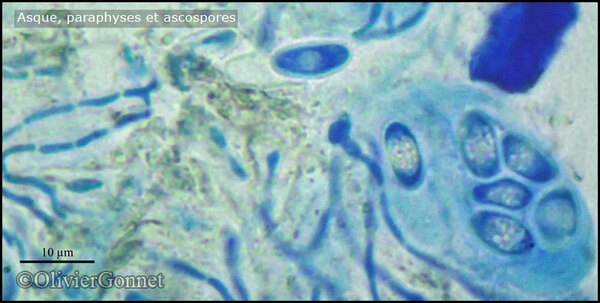Polyozosia liguriensis (B. de Lesd.) S.Y. Kondr., Lőkös & Farkas
in Kondratyuk & al., Acta Bot. Hung., 62, 1-2: 102, 2020. Basionym: Lecanora liguriensis B. de Lesd. - Bull. Soc. Bot. France, 96, 7-9: 175, 1949.
Synonyms:
Distribution: N - Lig. C - Tosc (Ravera & al. 2022).
Description: Thallus crustose, episubstratic, rimose-areolate, white to cream-coloured, forming well-delimited, small patches. Apothecia lecanorine, usually crowded, at first immersed, later subsessile, with a slightly concave to slightly convex, pale brown disc, and a persistent, smooth, slightly raised thalline margin. Thalline exciple without crystals; epithecium pale yellowish brown, richly inspersed with small crystals soluble in K; hymenium colourless in lower part, very pale brown in upper part, inspersed with small crystals; paraphyses encrusted with small crystals soluble in K along the whole length, with a gelatinous sheath, the apical cells 2-4 μm wide; hypothecium colourless. Asci 8-spored, elongate-clavate, very thin-walled, with a K/I+ blue, tall tholus penetrated by a faintly amyloid apical cushion, the wall K/I-, surrounded by a K/I+ blue outer layer, Lecanora-type. Ascospores 1-celled, hyaline, ellipsoid, 8-12 x 4.8-5.5 µm. Photobiont chlorococcoid. Spot tests; thallus K-, C-, KC-, P-. Chemistry: without lichen substances. Note: a rather poorly known species found on siliceous rocks in the adlittoral belt, also reported from the Mediterranean coasts of France. It differs from P. salina in the absence of gyrophoric acid and in the smaller apothecia devoid of crystals, and is related to P. albescens (see Roux & coll. 2014).
Growth form: Crustose
Substrata: rocks
Photobiont: green algae other than Trentepohlia
Reproductive strategy: mainly sexual
Taxon bound to maritime-coastal situations
Commonnes-rarity: (info)
Alpine belt: absent
Subalpine belt: absent
Oromediterranean belt: absent
Montane belt: absent
Submediterranean belt: absent
Padanian area: absent
Humid submediterranean belt: absent
Humid mediterranean belt: very rare
Dry mediterranean belt: absent

Predictive model
Herbarium samples
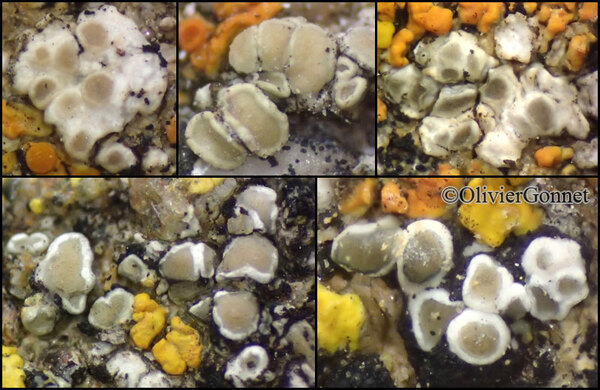
Courtesy Danièle et Olivier Gonnet - Source: https://www.afl-lichenologie.fr/Photos_AFL/Photos_AFL_M/Texte_M/Myriolecis_liguriensis.htm
France, Pointe des Bruzzi, alt. Pianotolli-Caldarellu - Corse
4/12/2014
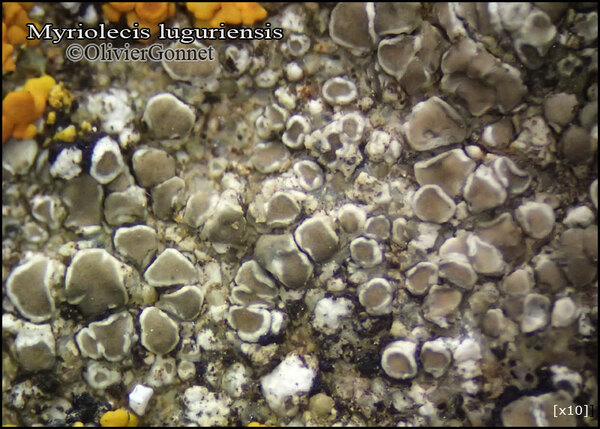
Courtesy Danièle et Olivier Gonnet - Source: https://www.afl-lichenologie.fr/Photos_AFL/Photos_AFL_M/Texte_M/Myriolecis_liguriensis.htm
France, Pointe des Bruzzi, alt. Pianotolli-Caldarellu - Corse
4/12/2014
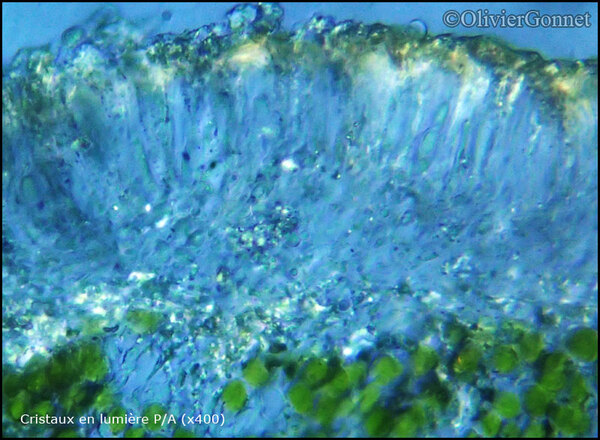
Courtesy Danièle et Olivier Gonnet - Source: https://www.afl-lichenologie.fr/Photos_AFL/Photos_AFL_M/Texte_M/Myriolecis_liguriensis.htm
France, Pointe des Bruzzi, alt. Pianotolli-Caldarellu - Corse
4/12/2014
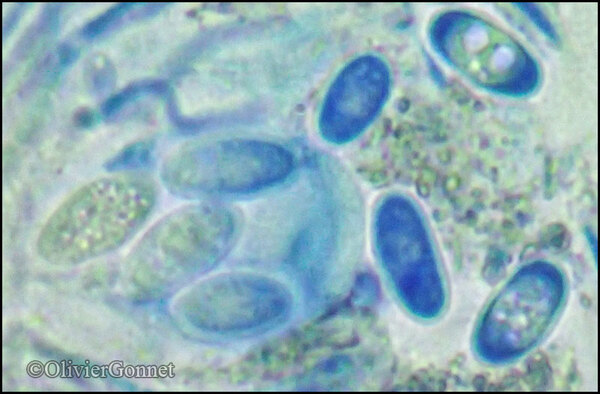
Courtesy Danièle et Olivier Gonnet - Source: https://www.afl-lichenologie.fr/Photos_AFL/Photos_AFL_M/Texte_M/Myriolecis_liguriensis.htm
France, Pointe des Bruzzi, alt. Pianotolli-Caldarellu - Corse
4/12/2014
Growth form: Crustose
Substrata: rocks
Photobiont: green algae other than Trentepohlia
Reproductive strategy: mainly sexual
Taxon bound to maritime-coastal situations
Commonnes-rarity: (info)
Alpine belt: absent
Subalpine belt: absent
Oromediterranean belt: absent
Montane belt: absent
Submediterranean belt: absent
Padanian area: absent
Humid submediterranean belt: absent
Humid mediterranean belt: very rare
Dry mediterranean belt: absent

Predictive model
| Herbarium samples |

Courtesy Danièle et Olivier Gonnet - Source: https://www.afl-lichenologie.fr/Photos_AFL/Photos_AFL_M/Texte_M/Myriolecis_liguriensis.htm
France, Pointe des Bruzzi, alt. Pianotolli-Caldarellu - Corse
4/12/2014

Courtesy Danièle et Olivier Gonnet - Source: https://www.afl-lichenologie.fr/Photos_AFL/Photos_AFL_M/Texte_M/Myriolecis_liguriensis.htm
France, Pointe des Bruzzi, alt. Pianotolli-Caldarellu - Corse
4/12/2014

Courtesy Danièle et Olivier Gonnet - Source: https://www.afl-lichenologie.fr/Photos_AFL/Photos_AFL_M/Texte_M/Myriolecis_liguriensis.htm
France, Pointe des Bruzzi, alt. Pianotolli-Caldarellu - Corse
4/12/2014


